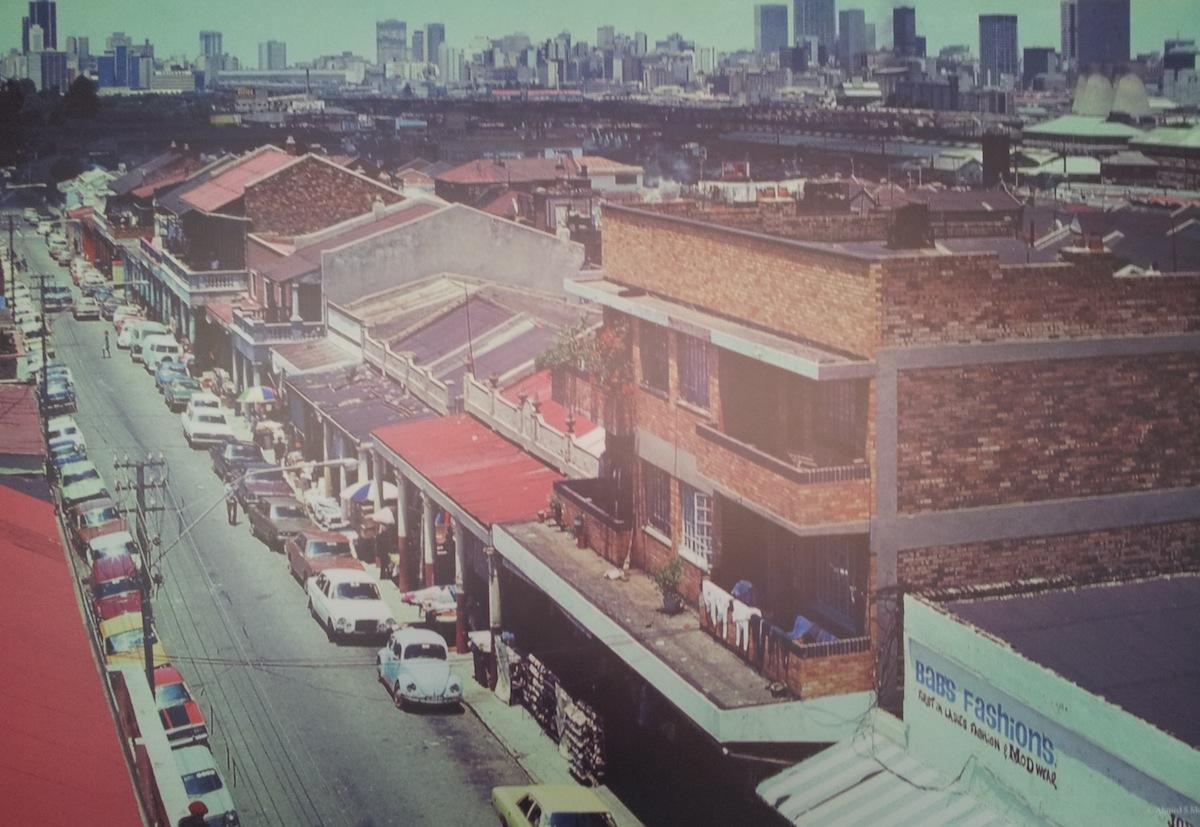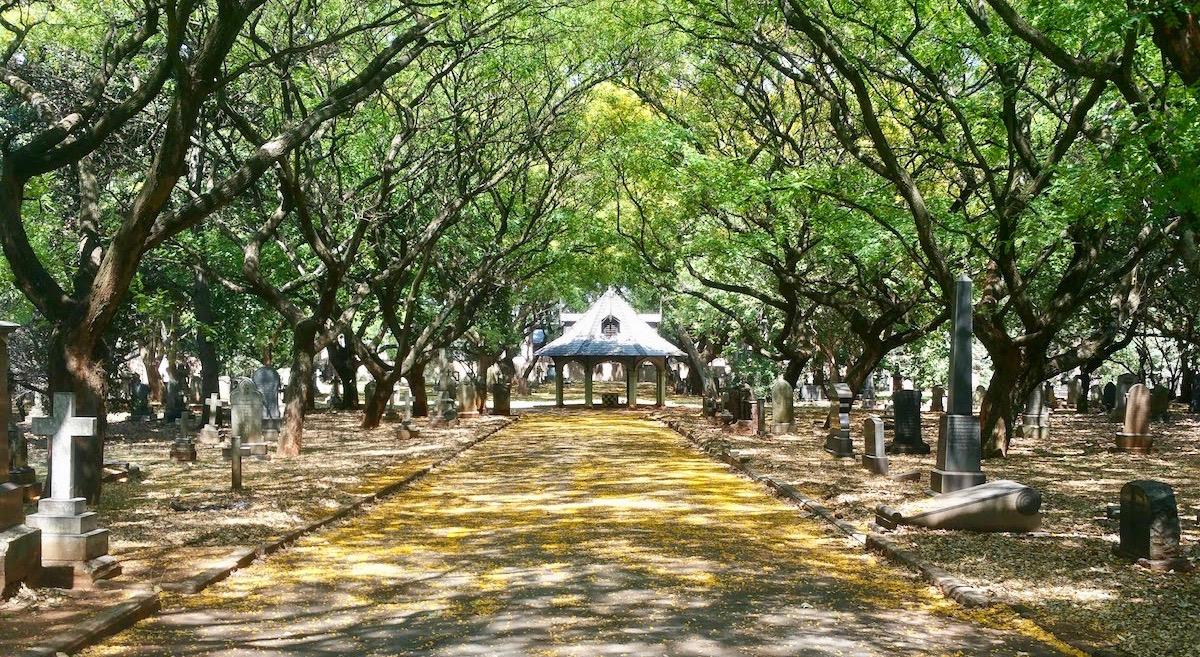Disclaimer: Any views expressed by individuals and organisations are their own and do not in any way represent the views of The Heritage Portal. If you find any mistakes or historical inaccuracies, please contact the editor.
Lesley and I first met Helen at a party, when some woman with wild hair and very red lips rushed up to us and informed us that we would be buying a copy of her book and that she would be delivering it to our house that next day and that the price would be R50. At that stage I was still a student and her price took a fairly large chunk out of our savings, and for many years thereafter it remained the single, most expensive book on our bookshelves. As I soon came to realise, Helen Aron took no prisoners, and let no grass grow beneath her feet.
Soon thereafter I began researching the history of Joburg as an Apartheid city, and Helen and I began to discover that we had a lot of ground in common, not the least being photography. On week-ends we used to make forays into the suburbs, into soon-to-be demolished Fietas, the ruins of Doornfontein, the mines about Joburg which had been closed since 1936 but no-one thought of as heritage, and the many, many buildings that were in the process of being demolished. I was poor and used cheap b/w slide film which you could buy in bulk and cost little to process, but Helen used professional material. It did not take long for me to realise that once behind her camera, she morphed into a genius. A while ago I asked her if she still had this archive but she muttered something about moving soon and having too much stuff to bother. Please, whoever is the executor of her estate, keep a look out for this material. Helen documented lots of heritage that she never published and her research must not be lost! This should be her legacy.
Old photo of Fourteenth Street Fietas (Fietas Museum)
Then we discovered the Braamfontein and Vrededorp cemeteries, and I can remember the wild whoops of excitement as we moved through the forest of tombstones and found the graves of so many of the names we knew about from Joburg's history. I fell into Fred Struben's grave whose slab caved in beneath me while I was trying to photograph its headstone, but we also recorded the last resting place of anonymous miners, of victims of the 1896 dynamite explosion, of leaders of the 1922 Rand revolution executed by Smuts, and of Chinese miners who had committed suicide because of the shame they had brought upon themselves through their gambling debts. It seemed that everywhere we looked we found something new and exciting, and seemingly ignored by more conventional historians.
Braamfontein Cemetery (The Heritage Portal)
Memorial to those who lost their lives in the Braamfontein Dynamite Explosion (Kathy Munro)
Once, when Helen organised a protest outside the City Hall against the demolition of yet another heritage building, we got bored with standing about on the City Hall steps and the two of us bearing placards invaded the Council chamber where a meeting was then in session. Reportedly this pissed off no end one "Obie" Oberholzer, then Grand Imperial Mugwump of the Council. Nowadays no-one remembers Obie or his moustache, but Helen's mighty deeds, her reputation and her work have become the subjects of urban legend!
She also spent a lot of time with us in the days and weeks leading up to the birth of our daughter, waiting for the moment when we would have to drop everything and rush Lesley to hospital. We did not realize it at the time, but Gabriella was born the day after Helen’s birthday.
Helen and I collaborated on a number of projects, both seen and unseen, and although she never cared for the dust and the heat of field research, she still visited a few times with me the village at KwaMatabeleng, where she abandoned her camera in the car and instead sat on the red earth steps of Salomina Msiza's home and laughed and joked with her about the things that only women talk about. Twenty years later the Msiza kids, now grown up, would still ask about "the crazy white woman" I had brought along with me.
Helen was a gregarious soul and moved in a wide circle of writers, artists, photographers, reporters, or just interesting and idiosyncratic people, and hardly a week-end would go by without receiving a phone call from her on the Monday for us to meet for lunch so that I could be introduced to her latest friend, who she always described as a "genius". I met a lot of people that way. We lost touch for a while, when I went off to teach at the University of Port Elizabeth (now known as NMU), but once I returned to Gauteng in 1994 we saw each other much more regularly. Not often enough though, as I now sadly realise.
Like so many of her generation of photographers she could be highly litigious when it came to the intellectual rights governing her work, sometimes to the point of obsession, and woe betide any transgressors. Perhaps rightly so, but she would also urge me endlessly to sue people who were abusing my drawings for commercial purposes. I never did so, but I also never discussed the politics of my work with her.
She was also a terror among landlords, fellow property owners, municipal officials and the local police force. I remember once, when she was still living in Hillbrow and became tired of the noise being made by a gaggle of prostitutes loudly conducting their business at night in the road outside her flat. She managed to get the home telephone number of the SAP station commander, phoned him at one in the morning and then hung out her window with her phone so that he could hear for himself what was going on. Like I said, Onse Helen took no prisoners.
It would be too much to say that I owe my interest in our cultural heritage to Helen. I was already well on that road by the time we met, but in her I found a partner in crime that complemented my interests in history and photography, and aided my search for the "true nature" of architecture. I am still not quite there yet, but when I do reach the end of that road I will be able to look back and note that Helen Aron was one of my milestones.
Go well, dear, crazy, impetuous, wild, creative, impossible, lovely, take-no-prisoners Helen. We will all miss you. If life were a plate of spaghetti, you are the Parmigiano that makes it all worthwhile.
Franco Frescura - Professor and Honorary Research Associate, University of KwaZulu-Natal.
Main image: Helen Aron at The Johannesburg Holocaust & Genocide Centre (Gail Wilson)
Comments will load below. If for any reason none appear click here for some troubleshooting tips. If you would like to post a comment and need instructions click here.


